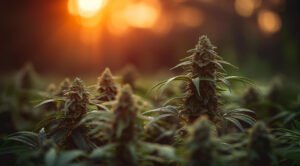CBD in Food: A Comprehensive Guide to Culinary Cannabidiol
As the wellness world embraces natural remedies, CBD in food has emerged as a powerful trend. From smoothies and salad dressings to baked…
Table of contents
As the wellness world embraces natural remedies, CBD in food has emerged as a powerful trend. From smoothies and salad dressings to baked goods and savory dishes, adding cannabidiol (CBD) to your favorite recipes can enhance relaxation, reduce inflammation, and support overall well‑being—without any psychoactive effects. In this long‑form guide, we’ll explore why people use CBD in food, how to cook with it, dosing tips, safety considerations, and answer your top FAQs.
Why Add CBD in Food?
- Enhanced Bioavailability
When ingested with fats, CBD is more readily absorbed via the digestive tract, improving its effectiveness. - Discreet Consumption
Infusing recipes with CBD masks the earthy flavor and allows you to enjoy benefits without tincture rituals. - Customized Dosage
Homemade edibles allow precise control over milligrams of CBD per serving. - Versatile Wellness Support
Whether you need calm for anxiety, relief from muscle soreness, or help sleeping, CBD in food fits any mealtime.
Forms of CBD for Culinary Use
- CBD Oil/Tincture: The most common form; look for MCT or olive oil carriers.
- CBD Isolate Powder: Pure CBD crystals; flavorless and easy to mix into dry ingredients.
- Broad‑Spectrum/Full‑Spectrum Oils: Contain additional cannabinoids and terpenes for the entourage effect; full‑spectrum includes trace THC (<0.3%).
How to Cook with CBD: Best Practices
- Choose the Right Oil
Use oils rich in healthy fats (coconut, avocado, olive) to improve CBD absorption. - Mind the Heat
CBD begins to degrade at temperatures above 320°F (160°C).- Low‑Heat Methods: Stir into sauces, dressings, smoothies, or no‑bake treats.
- Bake with Care: For recipes requiring heat, aim for 300°F or below and shorten bake times when possible.
- Calculate Dosage Precisely
- Determine total mg CBD in the oil or isolate.
- Divide by number of servings.
- Example: 300 mg CBD in 1 cup oil + 12 muffins = 25 mg per muffin.
- Infusion Techniques
- Oil Infusion: Gently warm oil and CBD tincture together (below 160°C) for 10–15 minutes, stirring to blend.
- Butter Infusion: Simmer butter and CBD isolate on low heat, strain, then use as regular butter.
- Store Properly
Keep CBD‑infused foods in airtight containers in the fridge or freezer to preserve potency.
Recipe Ideas Using CBD in Food
- CBD‑Infused Smoothie Bowl: Blend banana, berries, spinach, almond milk, and CBD oil for a nutrient‑packed breakfast.
- CBD Salad Dressing: Whisk olive oil, vinegar, mustard, herbs, and CBD tincture for an anti‑inflammatory dressing.
- No‑Bake CBD Energy Bites: Mix oats, nut butter, honey, chocolate chips, and CBD isolate; roll into balls.
- CBD‑Chocolate Bark: Melt dark chocolate, stir in CBD oil and nuts, then chill.
- Savory CBD Hummus: Blend chickpeas, tahini, garlic, lemon, and CBD for a post‑workout snack.
Dosing Guidelines
| Goal | Total Daily CBD | Suggested Serving Dose |
|---|---|---|
| Mild stress relief | 10–20 mg | 5–10 mg per serving |
| Moderate soreness/aches | 20–50 mg | 10–25 mg per serving |
| Sleep support | 25–50 mg | 25–50 mg before bed |
- Start Low: Begin with the lowest dose and wait 1–2 hours to assess effects.
- Consistency: Daily use yields more reliable results than sporadic dosing.
- Track Your Intake: Use a journal to log CBD amounts, meal timing, and perceived benefits.
Safety & Legality
- THC Content: Ensure products contain ≤0.3% THC if you need to pass drug tests.
- Consult Healthcare Providers: If you take medications metabolized by CYP450 enzymes (e.g., blood thinners), discuss CBD use with your doctor.
- Quality Assurance: Look for third‑party lab‑tested products with Certificates of Analysis (COAs) confirming purity and potency.
- Potential Side Effects: Mild drowsiness, dry mouth, or digestive upset—usually dose‑dependent.
FAQs

1. Will cooking destroy CBD?
Cooking at temperatures above 320°F can degrade CBD. Use low‑heat methods or reduce bake times to preserve potency.
2. How long do edibles with CBD take to work?
Effects generally onset in 45–90 minutes and last 6–8 hours, depending on metabolism and fat content.
3. Can I use CBD in savory dishes?
Absolutely. CBD oil blends well into sauces, dressings, and spreads—just mind the heat and dosage.
4. How do I mask CBD’s earthy flavor?
Pair CBD oil with strong flavors like citrus, garlic, herbs, or chocolate to balance its natural taste.
5. How should I store CBD‑infused foods?
Keep in airtight containers in the refrigerator (up to one week) or freezer (up to three months) to maintain freshness and potency.
Experimenting with CBD in food allows you to customize your wellness approach, blending cannabidiol seamlessly into everyday meals. By following dosing guidelines, respecting heat limits, and choosing high‑quality products, you can enjoy tasty dishes that support relaxation, recovery, and overall well‑being.







